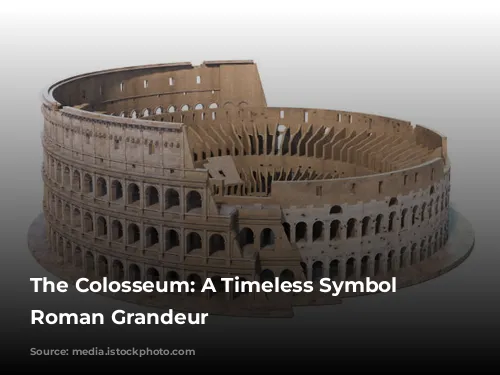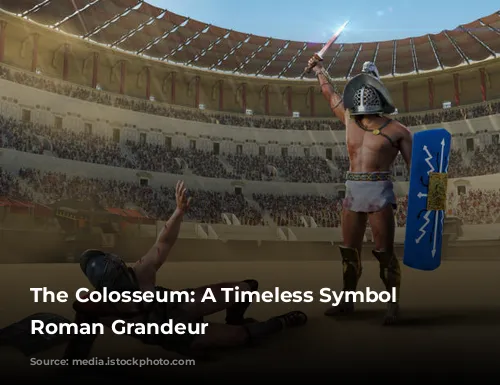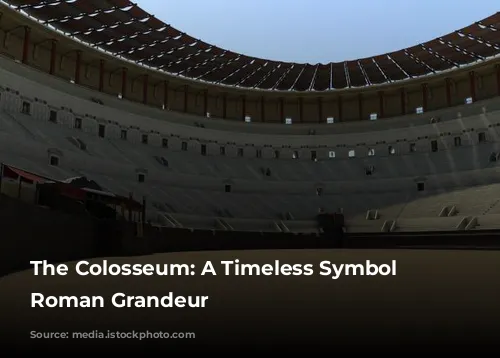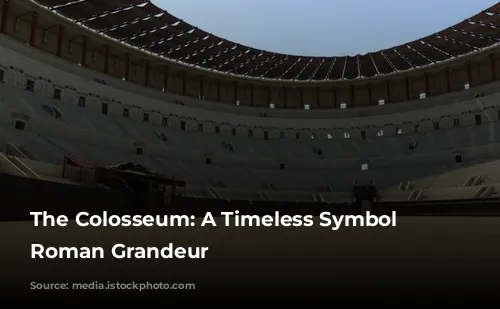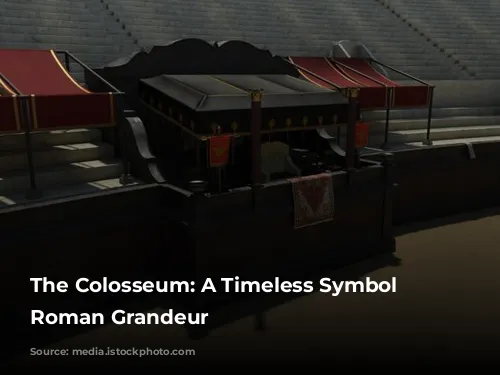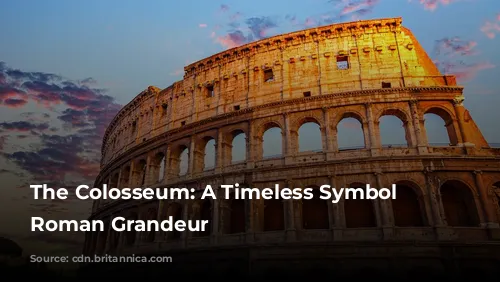Standing as one of the few largely intact relics of the Roman Empire, the Colosseum serves as a poignant testament to the architectural and engineering brilliance of ancient Rome. Beyond its historical significance, it also serves as a major driver of tourism revenue for the Italian government. In 2018, the Colosseum, Roman Forum, and Palatine Hill collectively generated over $63.3 million (€53.8 million), making it the most popular tourist destination in Italy.
A Legacy of Glory and Neglect
The Colosseum’s journey through time has been marked by both periods of grandeur and neglect. After the fall of the Western Roman Empire, the majestic structure fell into disrepair. During the 12th century, the Frangipane and Annibaldi families, powerful Roman families, repurposed the arena as their fortress, transforming the arena of gladiatorial combat into a stronghold. In the late 15th century, Pope Alexander VI permitted the Colosseum to be used as a quarry, its once-glorious stones plundered for other projects. For over a millennium, the Colosseum endured this cycle of neglect, its former glory fading into the shadows of time. However, in the 1990s, a glimmer of hope emerged as state-funded restoration efforts commenced, breathing life back into this ancient wonder.
A Monument to Imperial Ambition and Entertainment
The Colosseum’s construction was a testament to the ambitious spirit of the Flavian emperors, Vespasian and Titus. Built in the wake of the tumultuous year of the four emperors in 69 CE, the Colosseum was conceived as a grand project to revitalize Rome. Vespasian, the emperor who commissioned the Colosseum, envisioned it as a spectacular entertainment venue. Like other amphitheatres of the time, the Colosseum was designed to host gladiatorial contests, thrilling animal hunts, and even elaborate mock naval battles, offering a spectacle of entertainment for the Roman populace.

From Humble Beginnings to a Majestic Monument
The construction of the Colosseum commenced under Emperor Vespasian between 70 and 72 CE. The completed structure, a marvel of Roman engineering, was dedicated in 80 CE by Titus, Vespasian’s son and successor, marking a grand celebration of Roman power. The Colosseum’s fourth story was added by the emperor Domitian in 82 CE, further enhancing the monument’s grandeur. Interestingly, the funds for the Colosseum’s construction were derived from the spoils of Titus’s conquest of Jerusalem in 70 CE, with enslaved Jews from Judaea providing the labor for its construction.
A Colossal Architectural Masterpiece
The Colosseum, also known as the Flavian Amphitheatre, is an elliptical structure built with a combination of stone, concrete, and tuff. Rising to a height of four stories, it spans an impressive 620 by 513 feet (189 by 156 meters), capable of accommodating an audience of up to 50,000 spectators. The Colosseum was renowned for its use in gladiatorial combat, a brutal but popular form of entertainment in ancient Rome.
A Symbolic Transformation: From Nero’s Golden House to a Public Amphitheater
The Colosseum’s location, just east of the Palatine Hill, is steeped in symbolism. It was built on the grounds of what was once Nero’s Golden House, a lavish palace that embodied the extravagance of the tyrannical emperor. The artificial lake that served as the centerpiece of Nero’s palace complex was drained, and the Colosseum was erected in its place. This decision was as much a symbolic gesture as it was a practical one. Vespasian, a man who rose to power from humble beginnings, chose to replace Nero’s private lake with a public amphitheater, a testament to his commitment to the Roman people.

An Engineering Marvel: A Freestanding Structure
Unlike earlier amphitheatres, which were typically built into hillsides for structural support, the Colosseum is a freestanding structure, a remarkable feat of Roman engineering. Built with a blend of stone and concrete, it utilizes a complex system of barrel and groin vaults, spanning a vast area of 620 by 513 feet (189 by 156 meters). Three of the arena’s stories are adorned with arcades, each framed by engaged columns in the Doric, Ionic, and Corinthian orders, a testament to the architectural sophistication of the Roman Empire. The Colosseum’s arrangement of columns served as inspiration for the Renaissance codification of architectural orders. Travertine, a durable limestone, was used for the main structure and facade, while volcanic tufa formed the secondary walls, and concrete was used for the inner bowl and arcade vaults.
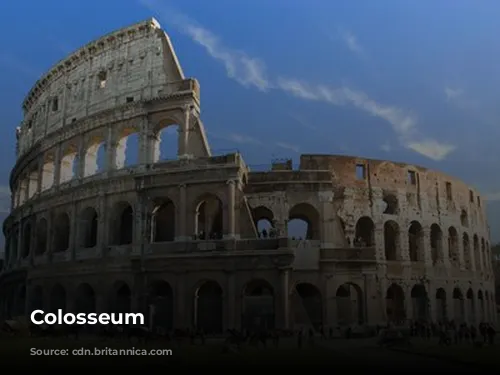
A Spectacle of Entertainment: Gladiatorial Combat and Beyond
The Colosseum’s design was not merely aesthetic, it was also functional. It provided seating for 50,000 spectators, who were shielded from the sun by a massive retractable awning known as a velarium. This awning was supported by masts that extended from corbels built into the Colosseum’s top story. Hundreds of Roman sailors were required to operate the complex rigging that extended and retracted the velarium. The Colosseum witnessed thousands of hand-to-hand combats between gladiators, contests between men and animals, and even large-scale mock naval engagements, providing a spectacle of entertainment for the Roman populace. However, the question of whether early Christians were martyred in the Colosseum remains a subject of debate.
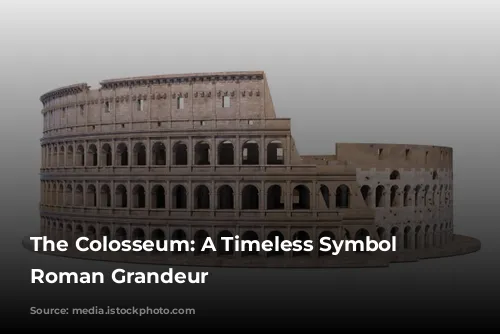
From Glory to Neglect and Back Again
During medieval times, the Colosseum was repurposed as a church, and later, it served as a fortress for two powerful Roman families, the Frangipane and the Annibaldi. Sadly, the Colosseum suffered damage from lightning, earthquakes, vandalism, and pollution. Its once-glorious marble seats and decorative materials were plundered, leaving the structure a mere quarry for over a thousand years. The preservation of the Colosseum began in earnest in the 19th century, with notable efforts led by Pope Pius VIII. In the 1990s, a comprehensive restoration project was undertaken, breathing life back into this ancient monument. Today, the Colosseum remains one of Rome’s most significant tourist attractions, welcoming close to seven million visitors annually. The Colosseum continues to inspire awe, serving as a reminder of the architectural prowess and cultural richness of the Roman Empire. Regular exhibitions are mounted, shedding light on the culture of ancient Rome and its enduring legacy.
